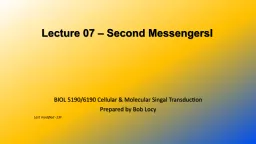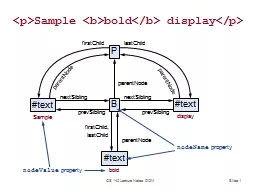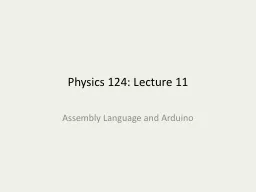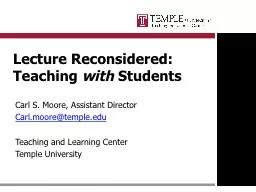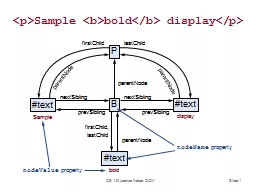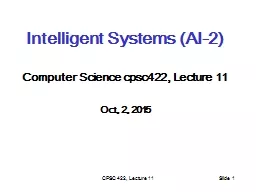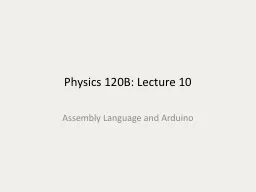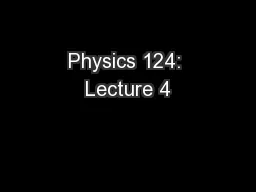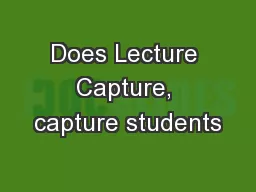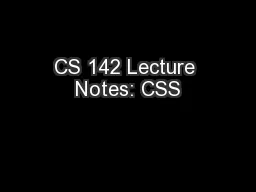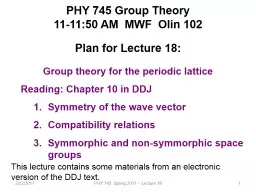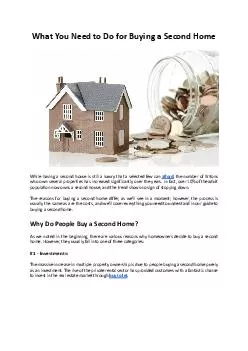PPT-Lecture 07 – Second
Author : marina-yarberry | Published Date : 2016-05-30
MessengersI BIOL 51906190 Cellular amp Molecular Singal Transduction Prepared by Bob Locy Last modified 13F Cell Signalling Mechanisms Cell Signalling Biology
Presentation Embed Code
Download Presentation
Download Presentation The PPT/PDF document "Lecture 07 – Second" is the property of its rightful owner. Permission is granted to download and print the materials on this website for personal, non-commercial use only, and to display it on your personal computer provided you do not modify the materials and that you retain all copyright notices contained in the materials. By downloading content from our website, you accept the terms of this agreement.
Lecture 07 – Second: Transcript
Download Rules Of Document
"Lecture 07 – Second"The content belongs to its owner. You may download and print it for personal use, without modification, and keep all copyright notices. By downloading, you agree to these terms.
Related Documents

